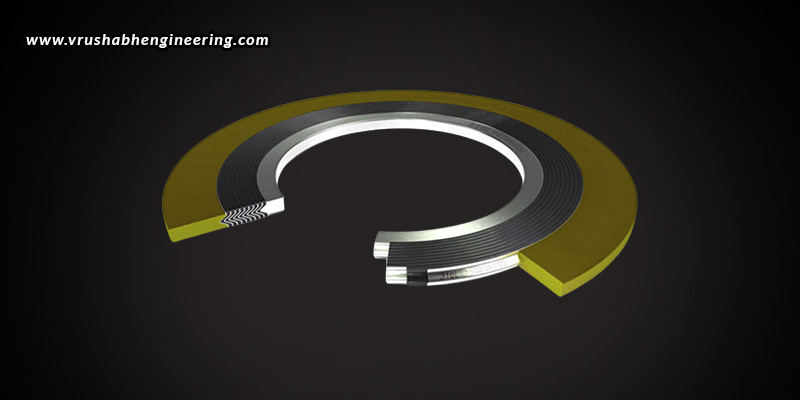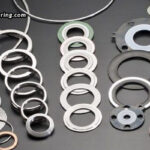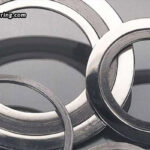Spiral wound gaskets rank among the most dependable sealing solutions utilized in various industries, including oil and gas, chemical processing, power generation, and marine applications. Engineered for durability, flexibility, and resistance to extreme temperatures and pressures, these gaskets are crafted to function effectively in demanding environments. Nevertheless, even the sturdiest gasket can experience premature failure if not stored, handled, or maintained correctly. In this article, we explore two vital components of spiral wound gasket performance – appropriate storage and handling techniques, along with an in-depth examination of gasket failure analysis – to assist you in maximizing the utility of your gaskets while minimizing the chances of leaks, operational downtime, and safety risks.
The importance of storage and handling
The correct storage and handling of spiral wound gaskets are crucial for maintaining their performance and extending their lifespan. These gaskets are meticulously engineered with precise tolerances and materials that can deteriorate when exposed to moisture, sunlight, dust, or mechanical stress. Even prior to installation, inadequate inventory management – such as improper stacking, temperature variations, or contact with contaminants – can jeopardize the gasket’s structural integrity. Warped metal windings, degraded filler materials, or corrosion may not always be apparent but can result in significant sealing failures during operation. By ensuring optimal storage conditions and exercising careful handling, you guarantee that the gasket operates reliably when it is most needed.
Best practices for storing spiral wound gaskets
- Control temperature and humidity
Spiral wound gaskets, particularly those containing non-metallic fillers such as graphite or PTFE, are vulnerable to environmental conditions. Elevated humidity levels can result in oxidation or corrosion of the metal windings, while extreme temperatures may compromise the integrity of the filler materials. Store gaskets in a cool, dry, and shaded area, preferably within a climate-controlled facility that offers adequate ventilation. Steer clear of locations close to heat sources or areas prone to moisture.
- Avoid UV and chemical exposure
Direct exposure to sunlight, ozone, and airborne chemicals (including solvents or cleaning agents) can cause material degradation, particularly in PTFE or rubber-coated components. Ensure that the gaskets are kept covered and sealed in protective packaging until they are needed. Avoid storing them near volatile chemicals or in environments with high ozone levels, such as near operating motors or welding stations.
- Label and rotate inventory
Gaskets may appear the same but can have varying material compositions or pressure-temperature ratings. Not tracking usage dates can result in the installation of expired or degraded gaskets. Clearly label all gaskets with their material, pressure class, size, and manufacturing date. Adhere to FIFO (First-In-First-Out) principles to prevent inventory from aging excessively.
- Use vertical hanging racks or flat shelving
Improper stacking can result in distortion, warping, or delamination of spiral wound gaskets. Placing heavy gaskets on top of one another can deform the sealing surface or unevenly compress the filler layers. Store large-diameter gaskets vertically using hanging racks or horizontally on flat, padded shelves. Refrain from stacking more than a few units together, especially if they are unboxed.
- Handle with clean hands and tools
Contaminants like oil, dust, or particles introduced during handling can jeopardize gasket integrity. Improper handling can also cause dents or bends in metallic components, diminishing sealing performance. Utilize clean gloves and tools during inspection and handling. Refrain from dragging or sliding gaskets across unclean surfaces. Exercise caution, particularly during transport from the warehouse to the site.
Early signs of gasket damage in storage
Even in controlled settings, regular inspection is crucial. Look out for –
- Rust or discoloration on windings
- Delamination of filler material
- Warping or distortion of the gasket shape
- Contamination such as dust, oil, or chemical residue
Dispose off any gasket that seems compromised. Using a damaged gasket poses a risk of failure, even under standard operational conditions.
Common causes of spiral wound gasket failure
While inadequate storage can shorten gasket lifespan prior to installation, numerous failures happen during or after the installation process. Grasping these failure mechanisms is essential for enhancing system reliability.
- Incorrect gasket selection
Choosing a gasket made from inappropriate materials or with unsuitable pressure-temperature ratings can result in swift failure. For instance, employing a carbon steel winding in a corrosive fluid environment, or utilizing a graphite filler when PTFE is necessary for chemical resistance. Verify compatibility with operating conditions – temperature, pressure, and media – by consulting gasket datasheets or seeking advice from the manufacturer.
- Improper installation torque
Insufficient tightening can result in leaks, whereas excessive tightening may crush the filler, distort windings, or lead to extrusion. Both situations result in inadequate sealing. Always utilize calibrated torque wrenches or hydraulic bolt tensioners. Adhere to the torque values recommended by the manufacturer and ensure even load distribution by tightening in a star pattern.
- Misalignment or uneven loading
Incorrect flange alignment or uneven bolt tightening can lead to gasket blowout, particularly under high pressure. Ensure proper alignment of flanges and apply load symmetrically. Utilize outer rings to aid in correct centring and loading.
- Flange surface defects
Flanges that are scratched, warped, or corroded can create leak paths, even when using a high-quality gasket. Surface flaws hinder complete contact and uniform compression. Examine and prepare flanges prior to installation. Surfaces should be clean, flat, and devoid of defects. Re-machine flanges if necessary.
- Thermal cycling and vibration
Excessive expansion and contraction, or constant vibration, can lead to gasket fatigue, delamination, or displacement from the sealing plane. Employ gaskets designed for high recovery and incorporate inner rings for added support. For systems subject to vibration, regular inspections are crucial.
Preventive measures to enhance long-term gasket reliability
To guarantee the extended lifespan of spiral wound gaskets, it is essential to focus on meticulous details throughout the stages of procurement, storage, handling, installation, and maintenance.
- Select the appropriate gasket type and material suited for the specific application.
- Store in a clean, climate-controlled environment with clear labelling.
- Educate staff on correct handling and torque application procedures.
- Examine flange surfaces and alignment prior to installation.
- Evaluate gasket performance during maintenance cycles or shutdowns.
Although a gasket is a minor component, it significantly contributes to plant safety, operational uptime, and efficiency.
Even with optimal practices established, the performance of your gasket ultimately hinges on the quality of its manufacturing. Therefore, selecting a supplier with a track record of expertise and quality control is crucial. Vrushabh Engineering offers high-performance spiral wound gaskets that are engineered for reliability in the most challenging environments. Through precision engineering, meticulous material selection, and professional advice on installation and handling, this spiral wound gasket manufacturer in India aids in minimizing failure risks and prolonging the lifespan of your sealing systems.





